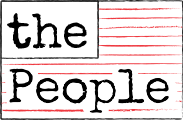Civics U: Separation of WHAT Powers
Why is the government not just one single, simple unit? Why are there three branches of the federal government with one of these, the legislative, having two parts?
Since many of the country’s founders came to escape the despotic rule of the king in England, they rejected the idea of establishing a monarchical government. Rather, they sought to establish a government that would protect their freedom and liberties.
At the same time, the founders wanted an effective and strong central government, but they wanted this government to be controlled and controllable.
The separate branches of the federal government were then established both as a way of having an effective government (one that can get things done) and as a way of controlling and limiting government (having checks and balances).
The separate branches are often referred to in terms of the “separation of powers” reflecting the separate powers and functions of each branch. Thus, the Congress creates laws, the executive branch carries out the laws, and the judicial branch assures that legislation conforms to and is carried out in accord with legal principles established in the Constitution and prior legislative and case law.
Having two parts in the legislative branch, the House and the Senate, involves a further separation and limitation of power. In establishing a congress, the states with smaller populations were concerned that proportional (population-based) representation would enable the states with large populations to control everything; the smaller states also argued that they were equal to larger states in their legal standing in joining the union. So it was agreed that one legislative body would be based on population, and the other would be based on equal representation for each state, and thereby limit or balance the power of the most populated states.
The separation of powers is usually mentioned in reference to the federal government and its separate branches. This can be called a horizontal separation. But there is another separation – a vertical separation. This is the separation between federal, state, and local governments, and the people. The Tenth Amendment states that “The powers not delegated to the United States by the Constitution, nor prohibited by it to the States, are reserved to the States respectively, or to the people.”
The questions then are:
What powers are delegated to the United States (the federal government)?
What powers are reserved for the States?
What powers are reserved for the people?
The United States (the federal government):
Article 1 Section 8 of the Constitution enumerates the powers of the government in 18 clauses. Some of these powers are: to lay and collect Taxes, to pay the Debts and provide for the common Defense and general Welfare of the United States; To borrow Money; To coin Money; To establish Post Offices and post Roads; To constitute Tribunals inferior to the Supreme Court; To declare War, To raise and support Armies, To provide for calling forth the Militia to execute the Laws of the Union, suppress Insurrections and repel Invasion; To make all Laws which shall be necessary and proper for carrying into Execution the foregoing Powers. See the full list of the powers of congress in this article, “U.S. Constitution: Article 1 Section 8”.
The States:
The powers of the states, rather than being listed in the Constitution, are limited only by what is prohibited by the Constitution or delegated to the federal government. Issues arise when States attempt to challenge powers of the federal government, and when the federal government attempts to intrude on the powers of the States. An example is federal government involvement in Education. Although Education is not delegated to the federal government in the Constitution and has been historically established and operated independently by States, the federal government now funds and oversees many programs and aspects of education.
Mention should also be made here of why the national government is called “federal”. When the colonies – then as states – joined together, the union was thought of as a federation in which there was a central government but in which the states retained a degree of self-governance and independence in internal affairs. The degree to which States were entitled to be independent, and even ‘sovereign’, was a matter of dispute from the beginning, and the matter of “states’ rights” still affects debates about governmental jurisdiction and operations today. Sometimes this leads to ‘practical’ solutions or compromises. For example, a number of federal programs are funded by the federal government, but the funds are given in the form of block grants to States to be administered by the respective States in ways that they think best suits their needs.
Thus the need for, and the limits on, the federal government’s power to command and regulate state governments, or activities within states (environmental laws, for example) continue to be dealt with in on-going political processes.
Meanwhile, “local” government units – counties, townships, cities – are normally subdivisions of the state, and states may both grant power to and also limit the power of their subdivisions. Even “local” public schools and school districts are legal subdivisions of the state. Arguments in favor of “local control” notwithstanding, local boards must implement and operate within regulations and education standards set by the state.
The people:
Given the prevalence of government and the existence these days of “big government”, what rights are reserved to and left for the people? The most important ones! The right of free speech and freedom of religion; the right to assemble, to be engaged in the governments at all levels, to vote, and to work to make the governments ones of the people and for the people.
Acknowledgements: Thanks to –
Carrie Crutchfield, Program Administrator for The People, for designing the Civic U logo.
Mark Huenemann for examples of historic issues used in the previous article on What Should a Citizen Know?

